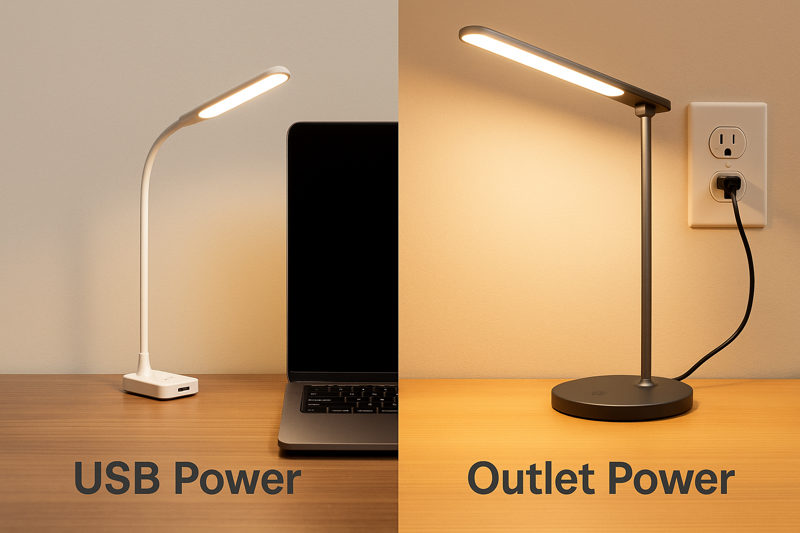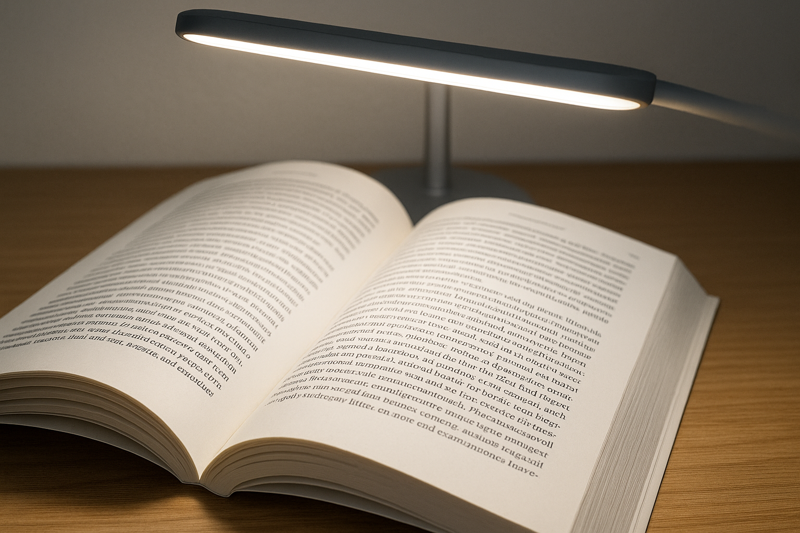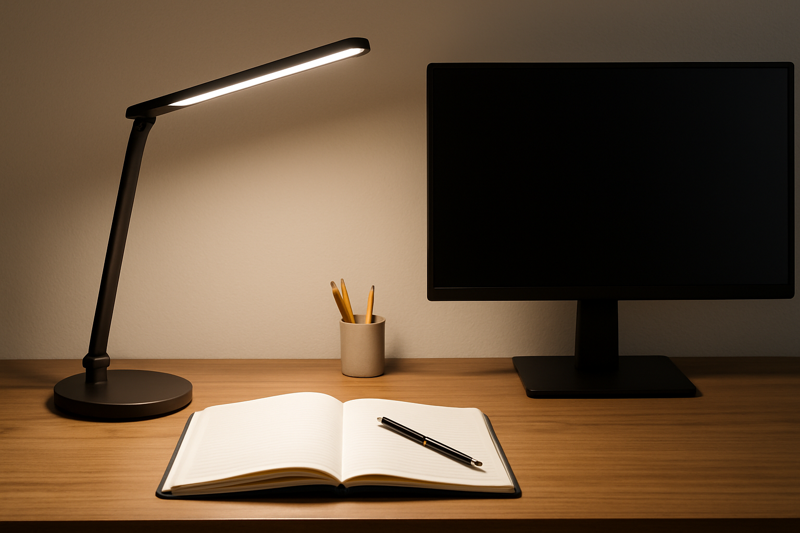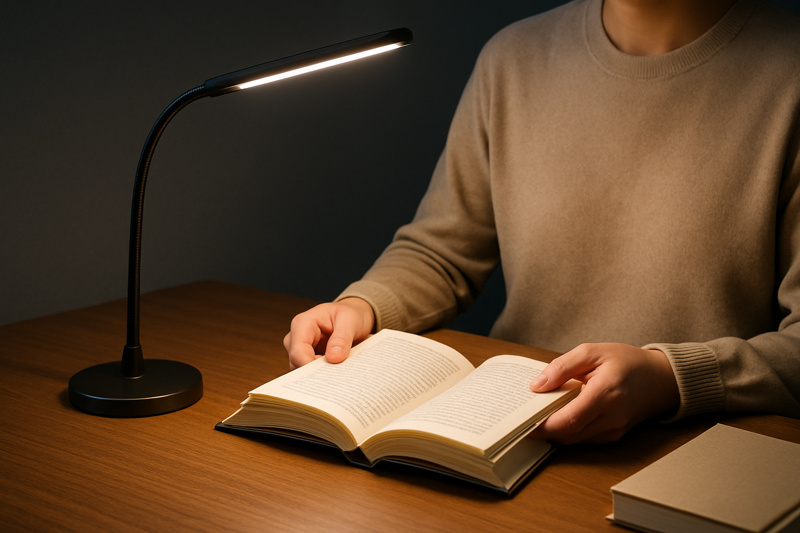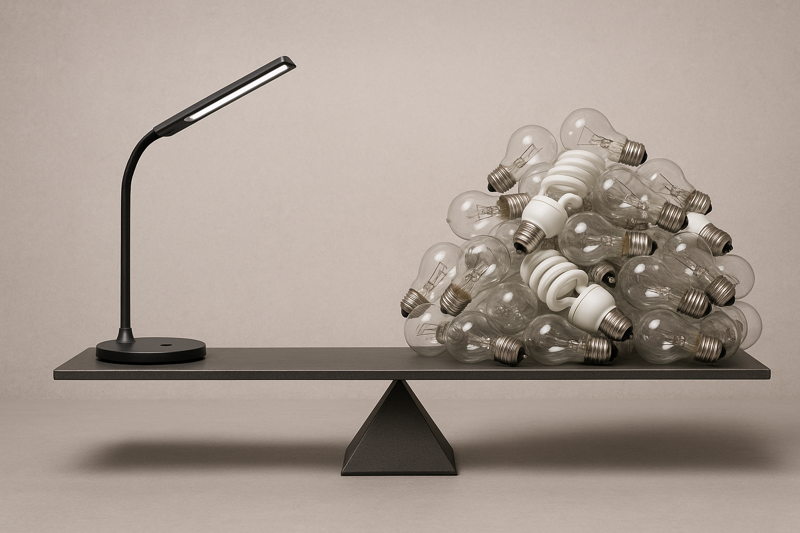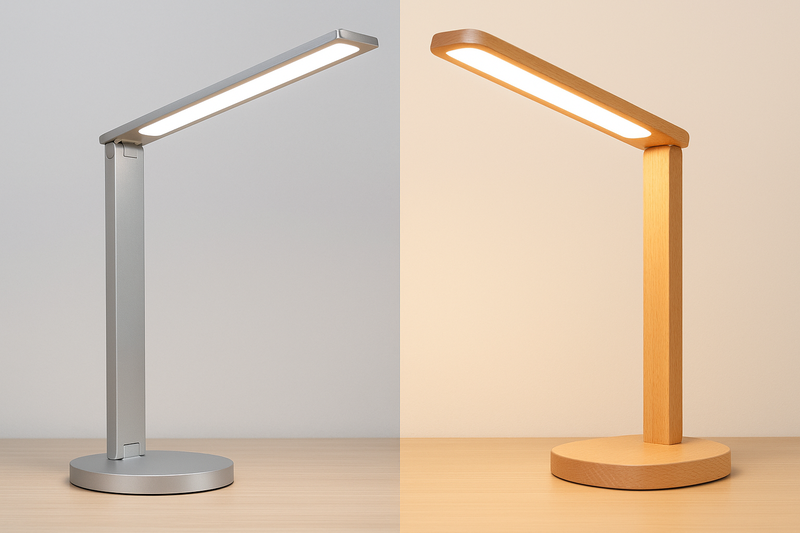
Is your desk lamp just a generic plastic tool, lacking any personality? A lamp's material is not just for looks; it defines its feel and durability. Imagine a lamp that truly complements your style.
LED desk lamp materials like aluminum profiles and natural woods such as beech not only determine the lamp's aesthetic but also impact its heat dissipation, durability, and user interaction.
Let's explore how the choice between modern metal and natural wood can completely change your lighting experience.
Why is Aluminum the Go-To for Modern, Minimalist Lamp Designs?
Are you tired of bulky, clunky lamps that dominate your desk? You want something sleek that blends in with your modern tech. A lamp made from the right material can achieve that clean look.
Aluminum profiles are favored for modern lamps due to their lightweight strength, excellent heat dissipation for LEDs, and ability to be crafted into sleek, minimalist forms with a premium finish.
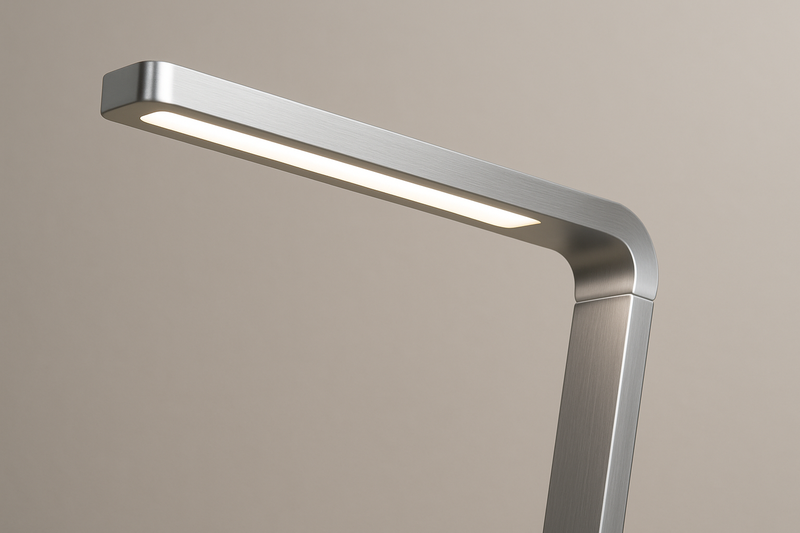
In my years as a manufacturer, I’ve seen aluminum become the gold standard for high-quality electronics, and for good reason. When we design a lamp, we aren't just thinking about light; we're thinking about the entire product experience. Aluminum allows us to create structures that are incredibly strong yet surprisingly lightweight. This is crucial for adjustable lamps with long, flexible arms—you need stability without the bulk. But the most critical technical advantage is heat dissipation. LEDs are very efficient, but they do generate heat. If that heat isn't managed, it can shorten the LED's lifespan. Aluminum is an excellent thermal conductor, naturally drawing heat away from the sensitive LED components and dissipating it into the air. This ensures the lamp lasts for its full 20,000-hour lifespan. Beyond the technical aspects, aluminum just looks and feels premium. It allows for clean lines, sharp angles, and a smooth, cool-to-the-touch surface that you can't get from plastic. It perfectly matches the aesthetic of modern laptops, phones, and monitors, creating a cohesive and professional workspace.
The Cool Advantage: Heat Management
Proper thermal management is key to a long-lasting LED product. A well-designed aluminum body acts as a silent, passive heatsink, protecting your investment.
Sleek, Strong, and Sustainable
Aluminum1 offers a unique combination of benefits. It's strong enough for durable moving parts, light enough for easy adjustment, and it's highly recyclable2, making it an environmentally conscious choice for modern manufacturing.
| Material | Key Properties | Ideal Use Case |
|---|---|---|
| Aluminum1 | Lightweight, excellent heat conductor, recyclable2, premium feel. | Modern, minimalist, and high-tech lamps. |
| Steel | Very strong and durable, heavy. | Industrial-style lamps or weighted bases for stability. |
| Plastic (ABS) | Inexpensive, versatile in shape and color, poor heat conductor. | Entry-level or budget-friendly lamp models. |
Can Wood Really Bring Warmth and Nature into a Tech Gadget?
Does your workspace feel cold, sterile, and dominated by screens and metal? Adding a natural element can make it feel more human. Imagine a lamp that doubles as a piece of natural decor.
Using materials like white beech wood introduces a natural warmth and unique texture to a desk lamp, softening the high-tech aesthetic and creating a more comfortable and inviting workspace.
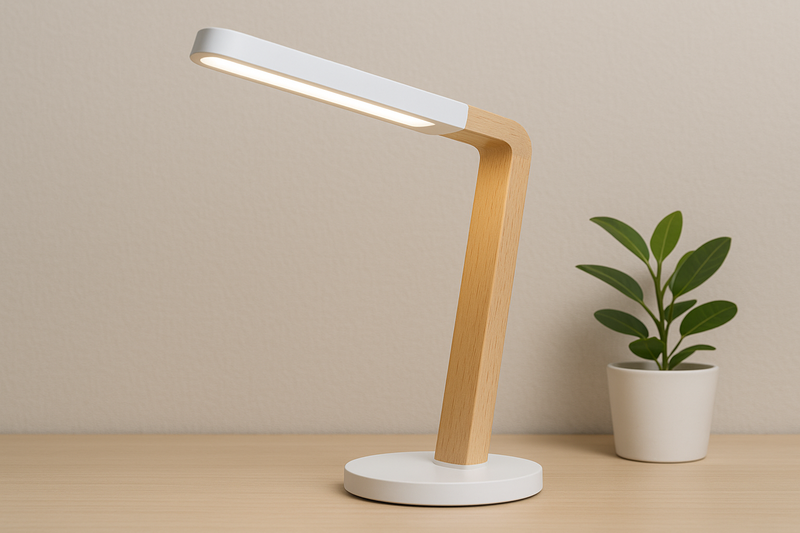
I remember when we first experimented with adding wood to our designs. The goal was to solve a problem I call "tech fatigue." Desks are covered in cold, hard surfaces. Adding a "texture of wood" was a deliberate choice to bring a touch of nature back to the workspace. We chose materials like white beech wood for its beautiful, subtle grain and light color, which pairs wonderfully with modern white or silver electronics. Unlike metal or plastic, every piece of wood is unique. The grain pattern on your lamp will be slightly different from any other, giving it a sense of character and individuality. There's also a tactile benefit. The feel of smooth, finished wood is warm and inviting in a way that metal can never be. It makes the lamp feel less like a cold tool and more like a piece of fine furniture. For customers who want to create a cozy, Scandinavian, or biophilic (nature-inspired) office design, a lamp with wooden elements is the perfect anchor piece. It sends a message that the workspace is not just for productivity, but for well-being too.
More Than Just Looks: The Tactile Experience
The way an object feels is a huge part of our experience with it. The warmth and organic texture of wood provide a pleasing contrast to the cold, smooth surfaces of our other tech devices.
Integrating Nature into Your Workspace
Biophilic design3, which incorporates natural elements into modern spaces, has been shown to reduce stress and improve focus. A wooden lamp is an easy and functional way to adopt this principle.
| Wood Type | Visual Characteristic | Feel & Style |
|---|---|---|
| Beech Wood | Light color, straight and fine grain. | Smooth and clean. Perfect for Scandinavian or minimalist decor. |
| Oak | Prominent, wavy grain, light to medium brown. | Textured and traditional. Great for classic or rustic styles. |
| Walnut | Darker, rich color with complex grain patterns. | Luxurious and sophisticated. Ideal for executive or mid-century modern desks. |
| Bamboo | Very light color with distinctive node patterns. | Eco-friendly and modern. Fits well in bright, airy spaces. |
What Happens When You Blend Metal and Wood in a Single Lamp?
Why should you have to choose between the sleek efficiency of metal and the natural warmth of wood? Sometimes the best design isn't a compromise. Imagine a lamp that gives you the best of both worlds.
Hybrid lamps combining aluminum profiles with beech wood accents create a balanced aesthetic, leveraging the technical strengths of metal for structure and the decorative appeal of wood for warmth and style.
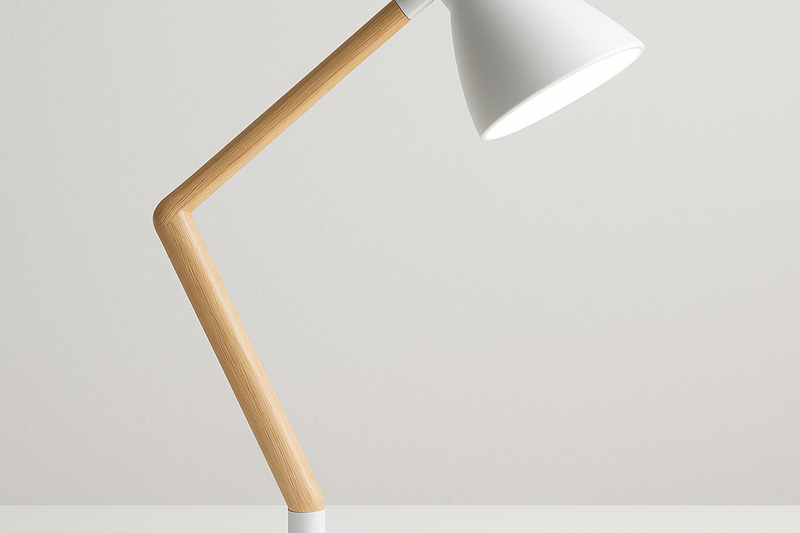
One of our most popular designs, the TX2230 model, was born from this exact question. We wanted the flawless performance of aluminum but the inviting feel of wood. The solution was a hybrid design. We used an "aluminum profile" for the critical structural and functional parts—the base, which houses the electronics, and the lamp head, which needs to dissipate heat. This ensures the lamp is stable and the LEDs perform optimally. Then, we crafted the main adjustable arm from beautiful white beech wood. This is the part of the lamp you see and interact with the most. The result is a stunning study in contrasts: the cool, precision-engineered metal against the warm, natural wood. This approach allows us to deliver on both form and function without compromise. As a bonus, it makes our lamps incredibly versatile from an interior design perspective. They fit perfectly in a purely modern office, but they also feel right at home in a more traditional or eclectic space. It bridges the gap between technology and furniture. For me, this blend represents the future of product design—marrying the best of technology with timeless, natural materials.
A Statement of Balance
A hybrid lamp is more than just a light source; it's a design statement. It shows an appreciation for both modern engineering and natural beauty, creating a sense of balance and harmony in your workspace.
Function Meets Form
This design philosophy allows materials to be used where they perform best. Metal provides the strong, heat-dissipating framework, while wood provides the aesthetic and tactile appeal.
| Design | Primary Material | Strengths | Weaknesses |
|---|---|---|---|
| All-Metal | Aluminum | Excellent heat dissipation4, durable, modern look. | Can feel cold or sterile, potential for glare. |
| All-Wood | Beech, Oak | Warm, natural aesthetic5, unique grain. | Poor heat dissipation4, may be bulkier. |
| Hybrid | Aluminum + Beech Wood | Best of both: metal for function, wood for warmth and style. | Can be more complex and costly to manufacture. |
How Does Material Impact a Lamp's Lifespan and Daily Use?
Do you just think about how a lamp looks when you buy it? The materials determine how it will feel and last over years of daily use. Imagine investing in a lamp that feels as good as it looks.
Material choice directly affects a lamp's durability, ease of maintenance, and the tactile experience of its features, such as the feel of a touch-sensitive dimmer on an aluminum bar.
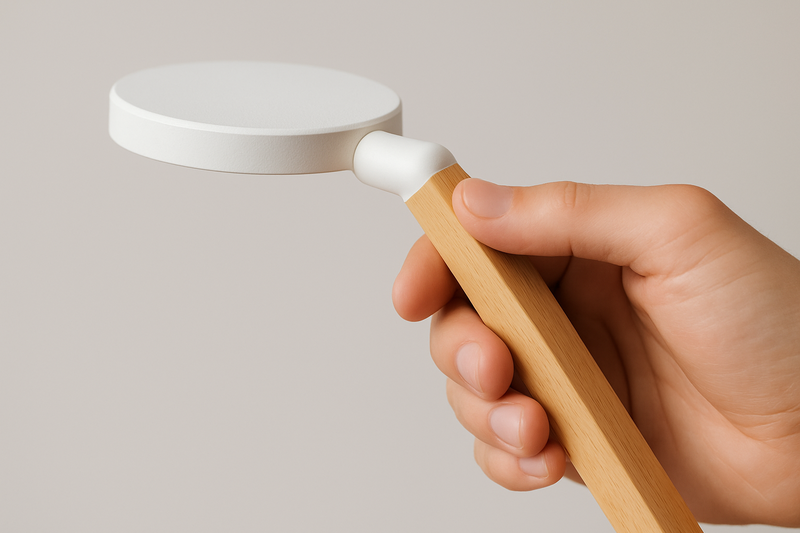
As a product manager, I obsess over the long-term user experience. A lamp isn't a disposable item. The choice of an aluminum frame, for example, is about durability. It resists corrosion and is less likely to show scratches than painted plastic. It's also incredibly easy to clean—a simple wipe-down is all it needs. Wood requires a bit more care, but a high-quality finish will protect it for years. The material also fundamentally changes how you interact with the lamp's features. Think about our dimming control. On some models, adjusting the brightness is done by sliding your finger along the aluminum bar. The cool, smooth feel of the metal provides a precise and responsive sensory feedback that makes the interaction feel high-tech and satisfying. This would feel completely different on a plastic surface. The weight and solidity of the materials also contribute to a perception of quality. A lamp with a weighted metal base feels stable and secure on your desk, unlike a lightweight plastic one that might tip over easily. These subtle details, all driven by material choices, are what separate a premium, long-lasting product from a forgettable one.
Built to Last: Durability and Maintenance
Good materials lead to a longer product life. Anodized aluminum resists fingerprints and scratches, while properly sealed wood can withstand years of use, developing a richer character over time.
The Feel of Quality
The physical interaction with a product tells you a lot about its quality. The satisfying click of a well-made joint, the smooth glide of a finger on metal, and the solid feel of a wooden arm all contribute to a superior user experience6.
| Material | Ease of Cleaning | Durability | Perceived Value |
|---|---|---|---|
| Aluminum | Very Easy | High (resists corrosion and scratches) | High |
| Wood | Easy (with proper finish) | Medium (can be scratched or damaged by moisture if untreated) | High |
| Standard Plastic | Easy | Low (prone to scratches and discoloration) | Low |
Conclusion
A lamp's material defines its soul—from aluminum's modern precision to wood's natural warmth, choose the one that fits your style.
-
Explore the advantages of aluminum, including its strength, lightweight nature, and recyclability, which are crucial for sustainable manufacturing. ↩ ↩
-
Learn about the significance of recyclable materials in reducing waste and promoting sustainability in manufacturing processes. ↩ ↩
-
Explore how biophilic design can enhance your workspace by reducing stress and boosting productivity. ↩
-
Understanding heat dissipation can enhance your design choices, ensuring functionality and comfort in your projects. ↩ ↩
-
Exploring the impact of natural aesthetics can inspire your design approach, creating inviting and harmonious spaces. ↩
-
Understanding user experience is crucial for product design and satisfaction, explore this link to enhance your knowledge. ↩


